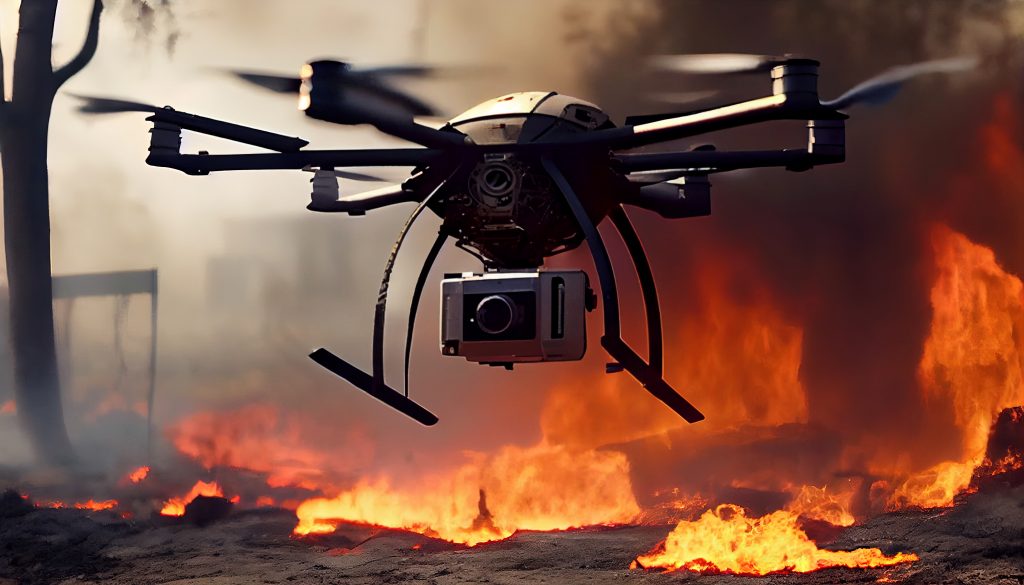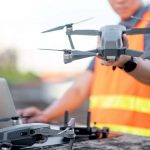Support the firefighting drone market to stay ahead of the spread.
Drone Technology is Impressive
Investment on the frontlines would help fire departments stay ahead of outbreaks. Advanced technology is just beginning to infiltrate emergency units; however, the costs for a firefighting drone are too expensive for many cash strapped brigades.
Nowadays, fire departments have the ability to have an eye in the sky. The drones have thermal imaging to help locate people in need of rescue. The benefits far outweigh the short-sighted focus on the costs.
The drones can identify the integrity of the structures, so crews remain safe. Emergency personnel can stay out of harms way and exit immediately if the operator sees any issues. Drones for firefighting are still in their infancy. Software capabilities have advanced rapidly.
The drones themselves will continue to become more purpose built. The price should decrease once scale is achieved. Just the same, they are already a great tool that is helping departments to save lives.
Not the Holy Grail
Any reasonable person recognizes that drones are not the holy grail, but a useful tool. Wildfires require enormous response.
In 2009, I personally witnessed what seemed like thousands of firefighters and hundreds of firetrucks along the roadway in Altadena, California. I saw one such response out of many, only one out of control wildfire that was taking down everything in its path,
I have never seen so many emergency response vehicles. This fire spread to the canyons around Los Angeles. The governor, Arnold Schwarzenegger, came out to visit the area to survey the ongoing damage.
The losses were immense. The fire raged on, taking down whatever million dollar homes stood in the way until it finally had spent its last energy. No, drones alone cannot fight fires.
Nevertheless, firefighters need the latest technology at their disposal to lesson damage. The cost of prevention is not cheap, but neither an avoidable inferno. Many lives are lost due to largely preventable outcomes.
Forestry management investment is not exclusive to drone technology. Spending can be allocated for both. Why not act before response is necessary?
Budgetary Restraints
Unfortunately, budget strains are depleting fire departments of the ability to invest in new equipment. Outbreaks in the years ahead, might well be attributed to these current budgetary shortfalls. The cost of investing in new equipment could be at least partially offset by avoiding larger future fire expenses.
Containing wildfires is difficult, risky, and unpredictable. Hopefully, more departments in drone use in firefighting. Some important advantages include faster response times and the ability to know where flames are spreading in real-time.
Robots and Drones
The technologies capable of advancing how we go about firefighting are vast. Robotic technologies are trying to tackle real world problems. One such idea is firefighting tanks that have the ability to shoot out an enormous amount of water.
Oftentimes, these robot designs operate autonomously. Wherever these technologies are deployed they have the potential to save lives.
The problem is in securing the investments. Departments are not willing or unable to secure funding due to the prohibitively high costs. Research advances rapidly, ahead of mainstream acceptance.
Some innovators are using drones to create purposeful back burns to help prevent fires from getting the fuel they need to spread out of control. Drone Amplified is helping to burn the underbrush and starve wildfires of the fuel they need to spread.
Drone technology is much cheaper than helicopters. Drones respond in minutes, as opposed to ground units long response times.
Other ideas for future fire prevention include swarms of drones working in unison to attack out of control fires. An overwhelming number of drones could adequately respond when needed.
Maybe in the future, some firetruck units could be smaller and more agile because they work in conjunction with drones. The ability to have a city van or ATV unit might allow for more efficient operations.
Heavy lift drones and Agricultural advancements will also continue to push the drone industry forward. Departments that aren’t using technology to stop the spread, most likely will in the future.
Police units have special drone units. Fire Departments might want to follow suit.
Unauthorized Drones
Emergency response crews are doing a job. Enthusiasts eager to get footage of wildfires or natural disasters are flying into restricted space. Emergency units are being force grounded. The costs of these incursions is expensive in more ways than one. Remember to always fly your drones safely.
FInal Thoughts
This article is solely focused on drones for wildfire applications. Drones for firefighting have many more uses beyond the scope of this article.
In summary, drones will continue to find their ways into more emergency departments. Drones simply perform many tasks too efficiently to ignore. Advancements in technology will foster new innovations for more applications of firefighters using drones. Lives will continue to be saved and more departments will get on board.





